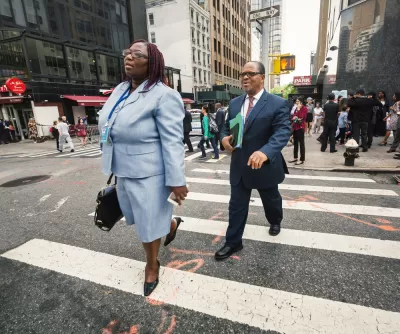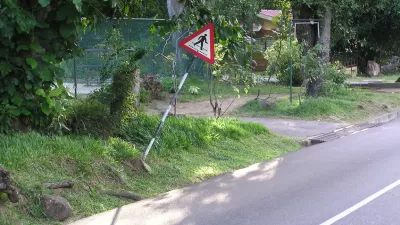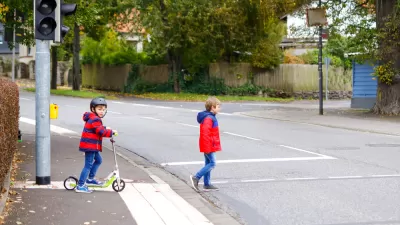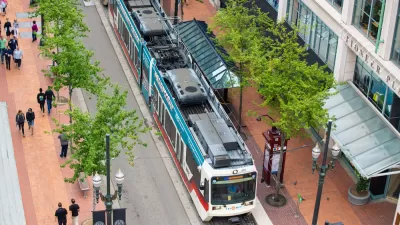The majority of pedestrian master plans consider how to make equitable walking infrastructure. Less than half of plans implement strategies to address the fact that people of color are disproportionately represented in pedestrian fatalities.

Amber Berg and Gregory Newmark's new paper "Incorporating Equity into Pedestrian Master Plans" analyzes 15 pedestrian master plans from major American cities "to understand how some of the largest departments of transportation were — or weren’t — centering the needs of marginalized communities in their policies," writes Kea Wilson.
Wilson points to a troubling finding from Smart Growth America that older, non-white pedestrians are disproportionately more likely to be killed by drivers than white pedestrians. Wilson describes the paper's analysis:
But Berg and Newmark found that even cities with more "vertical" approaches to equity planning were not necessarily reducing disparities in their equity metrics. To understand why, they evaluated all the plans through a framework they are calling the “Three A’s”: Acknowledgment, Accountability, and Application.
Measuring equity in pedestrian plans using these three metrics, Berg and Newmark found that Portland and Seattle lead the pack. "These seemingly subtle differences, the researchers say, can have huge implications for a region’s long-term equity efforts," writes Wilson.
FULL STORY: Why Every City Needs to Learn the Three A’s of Equitable Pedestrian Planning

Alabama: Trump Terminates Settlements for Black Communities Harmed By Raw Sewage
Trump deemed the landmark civil rights agreement “illegal DEI and environmental justice policy.”

Study: Maui’s Plan to Convert Vacation Rentals to Long-Term Housing Could Cause Nearly $1 Billion Economic Loss
The plan would reduce visitor accommodation by 25% resulting in 1,900 jobs lost.

Planetizen Federal Action Tracker
A weekly monitor of how Trump’s orders and actions are impacting planners and planning in America.

Waymo Gets Permission to Map SF’s Market Street
If allowed to operate on the traffic-restricted street, Waymo’s autonomous taxis would have a leg up over ride-hailing competitors — and counter the city’s efforts to grow bike and pedestrian on the thoroughfare.

Parklet Symposium Highlights the Success of Shared Spaces
Parklets got a boost during the Covid-19 pandemic, when the concept was translated to outdoor dining programs that offered restaurants a lifeline during the shutdown.

Federal Homelessness Agency Places Entire Staff on Leave
The U.S. Interagency Council on Homelessness is the only federal agency dedicated to preventing and ending homelessness.
Urban Design for Planners 1: Software Tools
This six-course series explores essential urban design concepts using open source software and equips planners with the tools they need to participate fully in the urban design process.
Planning for Universal Design
Learn the tools for implementing Universal Design in planning regulations.
Caltrans
Smith Gee Studio
Institute for Housing and Urban Development Studies (IHS)
City of Grandview
Harvard GSD Executive Education
Toledo-Lucas County Plan Commissions
Salt Lake City
NYU Wagner Graduate School of Public Service





























